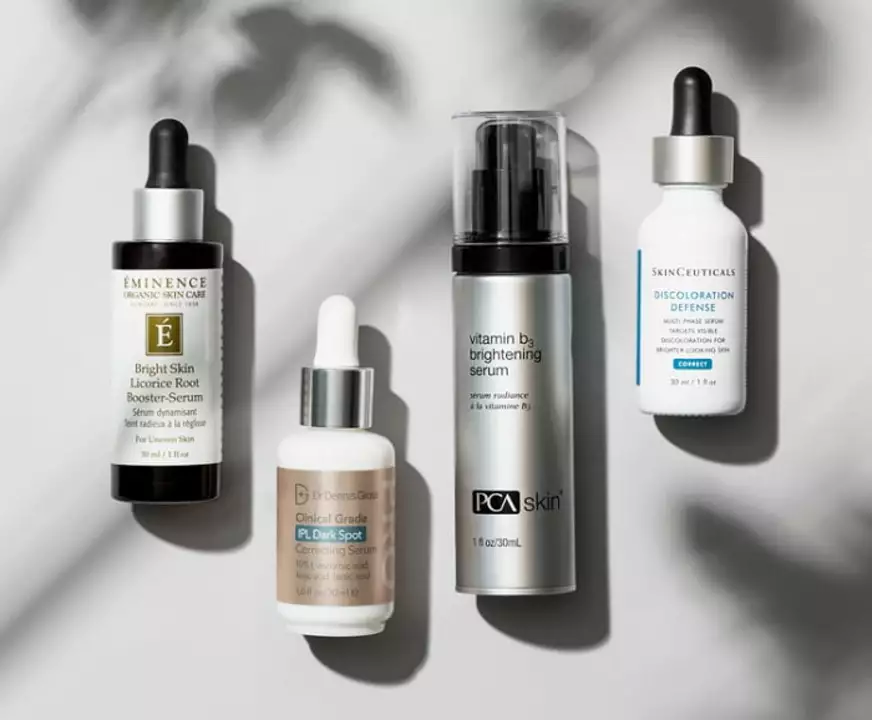Understanding Hydroquinone and its Benefits
Hydroquinone is a popular skincare ingredient known for its skin lightening properties. It is used to treat various skin concerns, such as hyperpigmentation, dark spots, and melasma. It works by inhibiting the production of melanin, the pigment responsible for skin color, thereby lightening the skin. In this section, we will delve into the benefits of hydroquinone and how it can help you achieve a more even and radiant skin tone.
Aside from its skin lightening effects, hydroquinone also helps improve skin texture and reduce the appearance of fine lines and wrinkles. It is an effective treatment for various skin conditions, making it a valuable addition to your skincare routine. However, it is essential to understand how to integrate hydroquinone into your daily regimen safely and effectively to get the most out of this powerful ingredient.
Choosing the Right Hydroquinone Product
Before incorporating hydroquinone into your skincare routine, it is crucial to select the right product for your needs. Hydroquinone is available in various forms, such as creams, serums, and gels, with concentrations ranging from 2% to 4%.
Over-the-counter products typically contain 2% hydroquinone, while prescription-strength products may have a higher concentration. When starting with hydroquinone, it is advisable to begin with a lower concentration to minimize the risk of skin irritation and gradually increase the strength as your skin becomes more tolerant.
Choose a product from a reputable brand and ensure that it is suitable for your skin type. If you have sensitive skin, opt for a product specifically formulated for sensitive skin to avoid adverse reactions.
Performing a Patch Test
Before applying hydroquinone to your entire face, it is essential to perform a patch test to ensure that your skin does not react negatively to the product. To do this, apply a small amount of the hydroquinone product to a discreet area, such as behind your ear or the inside of your elbow, and leave it on for 24 hours.
If you experience any redness, itching, or irritation during this time, discontinue use and consult a dermatologist. If your skin shows no adverse reactions, you can safely proceed with incorporating hydroquinone into your daily skincare routine.
Integrating Hydroquinone into Your Morning Routine
When using hydroquinone, it is best to apply it in the morning as part of your daily skincare routine. Start by cleansing your face with a gentle cleanser to remove dirt and impurities. Pat your skin dry with a clean towel and follow up with a hydrating toner to balance your skin's pH levels.
Next, apply a thin layer of the hydroquinone product to the areas of concern, such as dark spots or uneven skin tone. Allow the product to absorb into your skin for a few minutes before applying a moisturizer to keep your skin hydrated. Lastly, don't forget to apply a broad-spectrum sunscreen with an SPF of 30 or higher, as hydroquinone can make your skin more sensitive to the sun's harmful rays. Reapply sunscreen every two hours or after sweating or swimming to maintain adequate sun protection.
Incorporating Hydroquinone into Your Evening Routine
Hydroquinone can also be used in your evening skincare routine. Similar to the morning routine, begin by cleansing your face with a gentle cleanser and applying a hydrating toner. However, instead of applying the hydroquinone product, use a retinol or retinoid serum to help improve skin texture and tone.
Since retinol and hydroquinone can cause skin irritation when used together, it is advisable to alternate their use to minimize the risk of irritation. For example, use hydroquinone in the morning and retinol in the evening. Finish your evening routine with a moisturizer to keep your skin hydrated and nourished throughout the night.
Monitoring Your Skin's Progress
While using hydroquinone, it is essential to monitor your skin's progress and adjust your skincare routine accordingly. You may start noticing improvements in your skin tone and dark spots within four weeks of consistent use. However, it can take up to three months for more significant results to become visible.
If you notice any irritation, redness, or worsening of your skin condition, discontinue use and consult a dermatologist. It is also crucial to be patient and consistent with your hydroquinone regimen to achieve the best possible results.
Taking a Break from Hydroquinone
Long-term use of hydroquinone can cause skin irritation and may lead to a condition called ochronosis, characterized by blue-black discoloration of the skin. To minimize these risks, it is recommended to take a break from hydroquinone after three months of consistent use.
During this break, you can maintain your skin's progress by using alternative skin lightening ingredients such as arbutin, kojic acid, or niacinamide. After a break of two to three months, you can safely resume using hydroquinone if needed.
Consulting a Dermatologist
If you are considering using hydroquinone for the first time or have concerns about potential side effects, it is always a good idea to consult a dermatologist. They can help determine if hydroquinone is suitable for your skin type and condition and guide you on the appropriate concentration and usage duration.
A dermatologist can also recommend alternative treatments if hydroquinone is not the best option for your skin. By seeking professional advice, you can ensure that you are using the most effective and safe skincare products for your unique skin needs.


Comments (6)